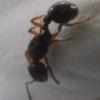I started ant-keeping this summer and I'm looking for some time-tables on colony growth. I know that this varies from species to species, but I don't even have a ballpark figure right now and I have like 6 different species of queens. I assume that the nanitics generally come in about 45 days, but when should I expect 10, 30, 100, 500 workers for optimal conditions and for typical conditions? Am I behind? When will I need formicariums for all my queens?
Thanks for reading!





















